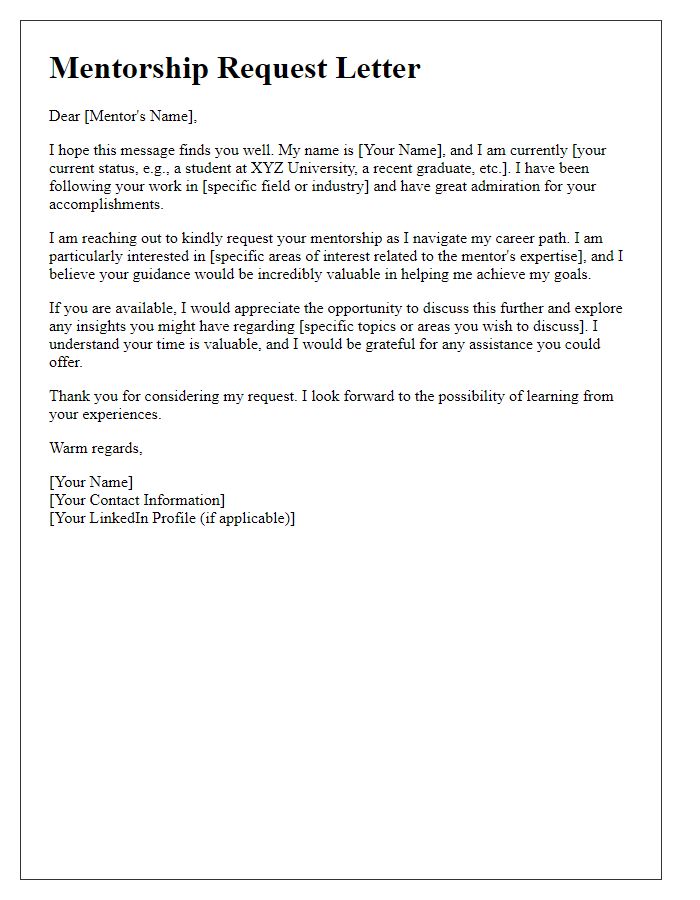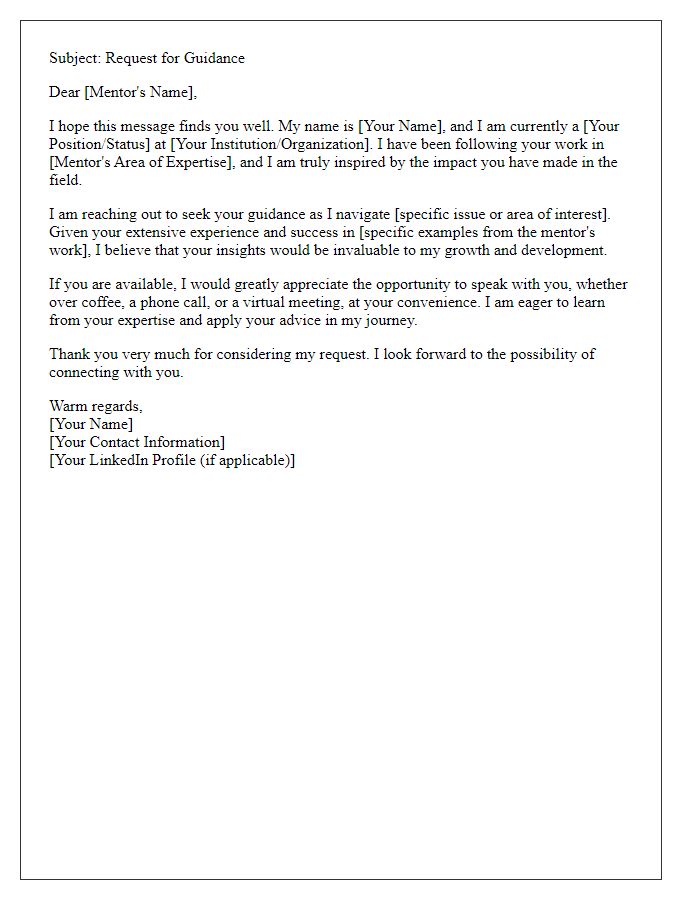Are you looking to forge a meaningful mentor-mentee relationship? Connecting with someone who can guide you through your personal and professional journey can be incredibly rewarding. In this article, we'll explore how to effectively craft a request for mentorship that resonates with potential mentors. So, if you're ready to take that next step and build a valuable connection, keep reading!

Professional Greeting
Building a mentor relationship can significantly enhance professional growth and development. A potential mentor could be an experienced individual within your field, such as a senior manager at a Fortune 500 company or a respected academic in a prestigious university program. Establishing rapport through a professional greeting is vital, ideally incorporating their title and last name, thus demonstrating respect and acknowledgment of their expertise. A well-crafted opening remarks about mutual interests, shared professional associations, or recent industry events may further solidify the foundation for a fruitful mentorship. Seeking guidance on career advancement or project insights could be the focal point of this initial outreach.
Purpose of Request
Establishing a mentor-mentee relationship can significantly enhance personal and professional development. Seeking guidance from an experienced individual can provide invaluable insights, especially in fields like technology, finance, or healthcare. Mentorship can contribute to skill development, networking, and career advancement. By approaching potential mentors, individuals aim to foster encouragement, wisdom sharing, and motivation through regular discussions and feedback. An effective mentorship request should articulate specific goals, desired expertise, and the potential for mutual growth, enhancing the chances of building a fruitful relationship.
Specific Goals and Expectations
Establishing a mentorship relationship can provide invaluable insights and guidance for personal and professional growth. The clarity in specific goals and expectations is crucial for both the mentee and the mentor. Identify key objectives, such as skill development in social media marketing, networking opportunities in the technology sector, or career progression strategies within a particular industry. Consider the frequency of meetings, preferred communication methods (in-person, email, video calls), and commitment level to ensure both parties align with the mentorship's purpose. Emphasize the desired outcomes and any specific projects or tasks that can be pursued together, creating a roadmap for success in this collaborative journey.
Mutual Benefits
Establishing a mentorship relationship offers significant benefits for both the mentor and mentee. A mentor, often an experienced professional with extensive knowledge in specific fields such as technology, business, or education, provides guidance and insights that can accelerate a mentee's personal and professional development. This relationship fosters networking opportunities, where the mentee gains access to industry contacts and knowledge about essential events like conferences or workshops. The mentee, often a younger professional or student, benefits from tailored advice, enhancing skills in areas such as communication, project management, and strategic thinking. Additionally, mentors may find fulfillment through sharing their expertise and gaining fresh perspectives from their mentees, promoting a reciprocal exchange of ideas. This synergy creates a supportive environment that can lead to career advancements for mentees and renewed enthusiasm for mentors, ultimately enriching their respective journeys.
Polite Closing and Contact Information
A respectful closing statement is crucial when expressing gratitude and maintaining professionalism. You might consider concluding your request with phrases such as "Thank you for your time and consideration" or "I appreciate your guidance and support". Include your full name for clarity (e.g., John Doe) along with your contact information, which may consist of an email address (e.g., johndoe@email.com) and phone number (e.g., +1 555-0123). Additionally, specify your preferred methods for communication (e.g., email or phone) to facilitate further correspondence. This ensures a polite and welcoming end to your request, encouraging a positive response.













Comments